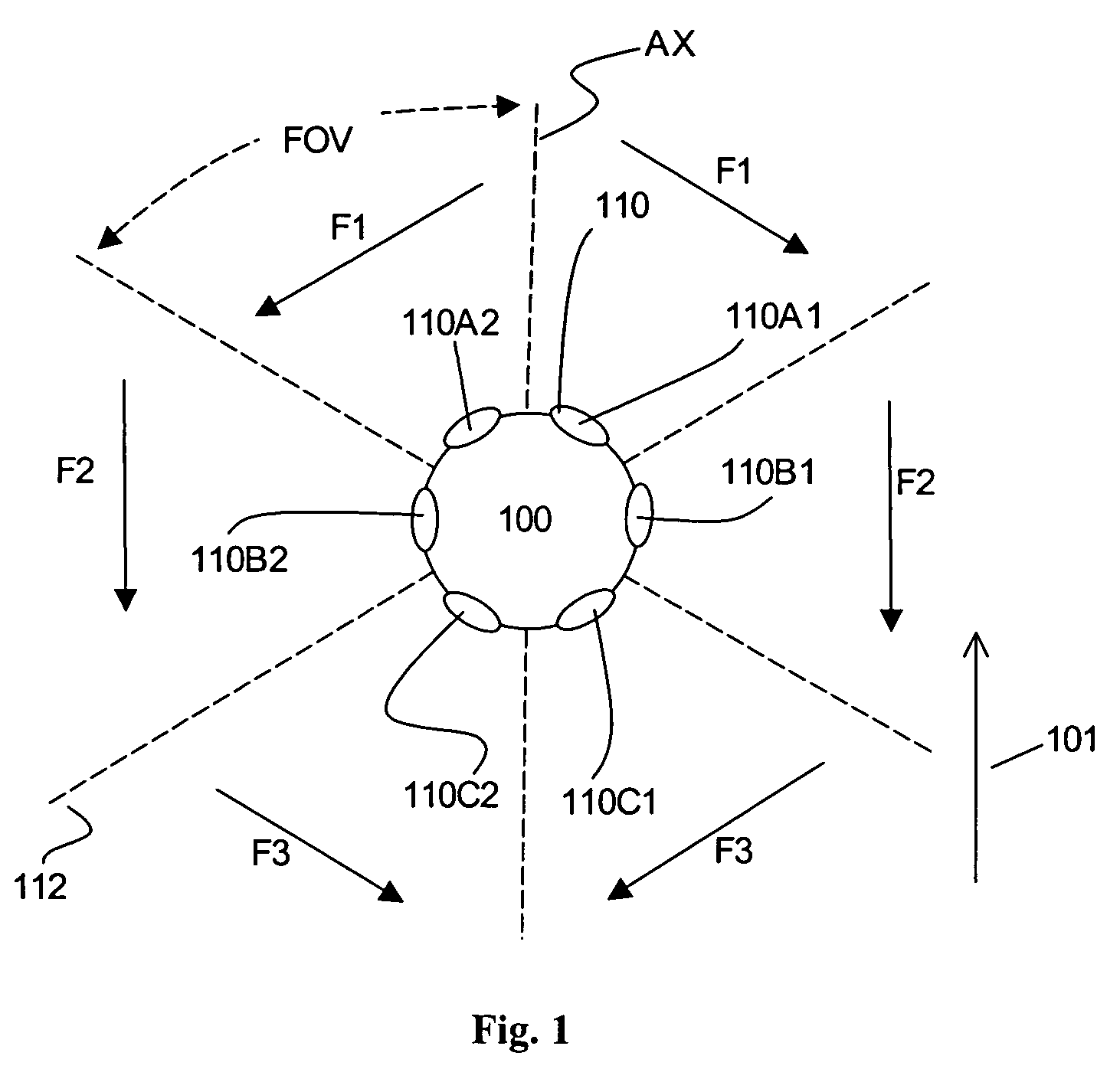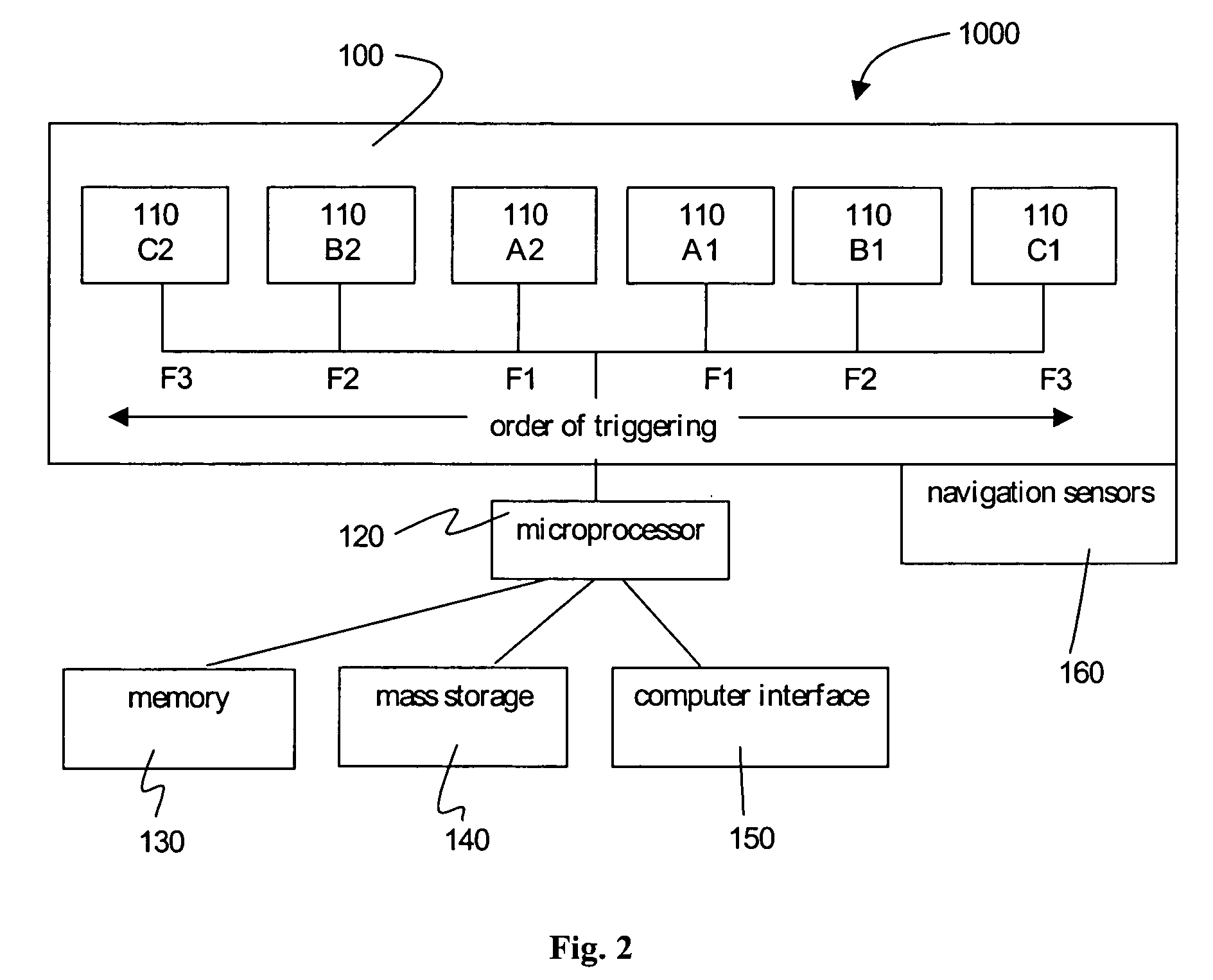Method and apparatus for panoramic imaging
a panoramic imaging and camera technology, applied in the field of wide-angle imagery, can solve the problems of unnecessarily increasing the cost of imaging system, requiring expensive fisheye lens cameras, and images taken of moving vehicles with conventional cameras using such inexpensive cmos image sensors, and achieves the effect of little or no distortion and little distortion
- Summary
- Abstract
- Description
- Claims
- Application Information
AI Technical Summary
Benefits of technology
Problems solved by technology
Method used
Image
Examples
Embodiment Construction
[0032] The present invention will now be described more fully in detail with reference to the accompanying drawings, in which the preferred embodiments of the invention are illustrated. This invention should not, however, be construed as limited to the embodiments set forth herein; rather, the illustrations are provided so that this disclosure will fully convey the scope of the invention to those skilled in the art.
[0033]FIG. 1 is a top plane diagrammatic view of a compound camera 100 according to the invention. The compound camera 100 comprises a plurality of low-cost single cameras 110. In the Preferred Embodiment of the invention, the compound camera 100 has pairs of single cameras 110 arranged about an orientation axis AX as shown. The orientation axis AX is an imaginary line that extends from a first axis end at the front center position to a second axis end at the rear center position of the compound camera 100. In the embodiment shown, the pairs of single cameras 110 include...
PUM
 Login to View More
Login to View More Abstract
Description
Claims
Application Information
 Login to View More
Login to View More - R&D
- Intellectual Property
- Life Sciences
- Materials
- Tech Scout
- Unparalleled Data Quality
- Higher Quality Content
- 60% Fewer Hallucinations
Browse by: Latest US Patents, China's latest patents, Technical Efficacy Thesaurus, Application Domain, Technology Topic, Popular Technical Reports.
© 2025 PatSnap. All rights reserved.Legal|Privacy policy|Modern Slavery Act Transparency Statement|Sitemap|About US| Contact US: help@patsnap.com



